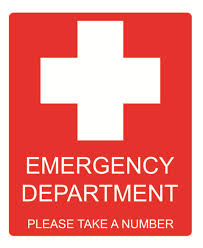 Reducing overcrowding in Emergency Rooms (ERs) has been an issue of great concern as of recent years. There are a myriad of reasons why the ERs are overcrowded and ways to overcome. Let’s have a look at them.
Reducing overcrowding in Emergency Rooms (ERs) has been an issue of great concern as of recent years. There are a myriad of reasons why the ERs are overcrowded and ways to overcome. Let’s have a look at them.
Reducing Overcrowding – Expanding Hospital Capacity
By increasing the bed capacity, overcrowding can drastically go down. When there are more beds, more emergency patients can be admitted. When the population of a country grows, then obviously the number of bed capacity should be increased to avoid overcrowding. Many times, hospitals are perpetually full with admitted patients boarded in the ERs. Boarding of inpatients in the ERs is unquestionably the leading cause of overcrowding. While this seems like a simple option, there are infrastructure, costs, and the redesign of processes, to name a few, which need to occur in order to successfully add bed capacity.
Reducing Overcrowding – Prioritizing Patients with Emergency
The hospitals should make it a point to admit only emergency patients in the ERs. Patients have become accustomed to using emergency rooms as an alternative to primary care. The intrigue of course is a matter of convenience, with emergency rooms open 24/7. Extending the hours of primary care could drastically reduce the use of emergency rooms for routine issues and illnesses.
Reducing Overcrowding – Providing Alternatives for the Uninsured Patients
Emergency rooms have become a place of refuge for those that are uninsured. Many emergency rooms are required to take anyone who presents in the emergency room, regardless of whether or not they are insured and whether or not they have the funds to pay for the services. Primary care, on the other hand, generally speaking, can refuse to take patients who do not carry insurance and or do not have the ability to pay. Some alternatives for these patients might involve community health centers or other health facilities outside of the emergency department arena.
Reducing Overcrowding – Stop Boarding Admitted Patients in ERs
This is a serious issue which needs to be taken care of. Limited bed capacity results in boarding of admitted patients in the ERs. Boarding is when a patient has had the paperwork completed to admit as inpatient, but there isn’t an empty bed on the specified inpatient floor. The patient then remains in the emergency department, taking up bed space, while awaiting a transfer. Patients are boarded in hallways, annexes and storage rooms. Boarding of patients contributes to the overcrowding of emergency rooms. In order to rectify, hospitals must review their procedures in terms of efficiency and throughput (from patient presenting in the ER, to actually transferring to inpatient or being discharged.
Prevent Disease and Injury
Apart from the medical department, the public too can help in reducing overcrowding in emergency rooms. Routine visits to primary care or other outpatient facilities and clinics can reduce the number of emergency room visits. Prevention is key. Partnerships with primary care and community outreach can lead to healthier patients, reduce the overcrowding in emergency rooms, and reduce healthcare costs.
These are some of the ways through which overcrowding can be reduced in emergency rooms. What is your organization doing to reduce emergency department overcrowding? We would love to hear your comments and best practices.
Author bio: William Delgado is a good researcher, and for the past several years, concentrated on academicals for students who require best essay writer with quality service to accomplish their assignments and other projects. This has helped William to be gain expertise in services that assist in essay writing.
